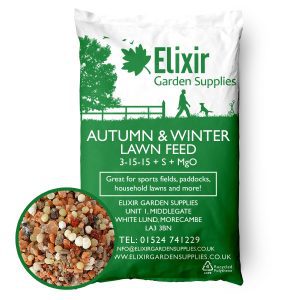Sweetcorn...Not Just for Cobs
This year I’ve had a bumper harvest of sweetcorn, the large well filled cobs have not only supplied the freezer but kept the chickens very happy for a couple of weeks during harvest too.
Making Use of Big Crops
Once the kernels have been cut away and bagged up the chickens pick off every last piece of yellow off the cob to leave a perfectly white, if slightly muddy core!
But what do you do with the plant itself once the cobs have been harvested? This year with all the rain mine have excelled themselves and have reached about 7 ft. high. You can let them dry out. They make an excellent kindling for a spring bonfire to burn fruit tree pruning that may be diseased. I also know someone who uses them to light the wood burner! But this seems quite wasteful as they could provide a very valuable source of organic matter.
Maize, the agricultural cousin of sweetcorn has been said to be one of the most damaging crops to the environment. This is mainly due to the fact that crops are harvested in the autumn, with fields then left bare during the winter and thus become very subject to wind and water erosion and pollution due to the leaching of nutrients. I used to cut the spent corn plants near to the ground and remove them, shred them and then compost. But a couple of years ago I tried a new approach, which by returning organic matter directly to the area the corn has grown on, is really benefiting the soil structure.


Prepping for Next Season
I grow my sweetcorn in a rotation block with peas and courgettes /marrows, this means that the whole blocks cropping is complete by late autumn.
The following crops will be brassicas which won’t be planted until the following June. That results in the ground being bare for a number of months during winter and springtime.
When the peas have finished cropping the nitrogen rich pea haulm (stalks and leaves) are simply spread on the surface where they help to reduce weeds and will breakdown over the winter and be almost completely gone by the following spring. This approach encourages worm activity who draw down the organic matter into the soil.
So could the same approach work with corn stalks? The answer is yes very much so, but being much tougher you need to shred them first.
Just before the corn is cut down I usually do a quick hand weed to remove any weeds, but this year due to the wet weather, grass weeds have proliferated with annual meadow and smooth stalked meadow grass looking very healthy but not yet seeding.
Shredding the Stalks
Removing their fibrous roots usually means removing lots of soil with them so instead, and for speed, I spot treated the weeds at the base of the corn plants with glyphosate instead to ensure they are dead, as even a little piece of grass left will carry on growing and seeding throughout the winter.
The next job is one of my favourites – shredding the corn stalks! An ordinary electric shredder is perfect for the job and makes short work of reducing the large stalks to buckets of valuable mulch composed of a mix of corn pith from the stalks and leaf material, I then simply spread onto the area where the corn has grown to a depth of around 50mm.
Over the wintertime, this mulch will completely eliminate any further germination and growth of annual weeds and will breakdown naturally and be fully incorporated into the soil by worm activity by next April. Combined with the decomposition of the fibrous corn roots you will find that contrary to damaging the soil, growing sweetcorn and immediately mulching with the shredded stalks will give you the most fantastic, easily worked soil in your garden that is perfect for next year’s crops.

Share This Blog
Featured Products
-

Complete Winter Lawn | 4-3-8
£7.99 – £59.49 Select options This product has multiple variants. The options may be chosen on the product page -

Frost Fleece Plant Protection | 1.5m, 2m, 3m, 4m, 6m & 8m Widths
£5.99 – £449.99 Select options This product has multiple variants. The options may be chosen on the product page -

Autumn & Winter Lawn Feed | 3-15-15
£6.99 – £42.99 Select options This product has multiple variants. The options may be chosen on the product page -

TH0-B Tube Heaters with Guards & Thermostats
£20.99 – £77.99 Select options This product has multiple variants. The options may be chosen on the product page -

BH-20R3 Electric Fan Heater | 2kW
£29.99 Add to basket -

Tree & Shrub Defender+ | Wind, Rabbit & Hare Guards / Shelters
£9.99 – £2,279.99 Select options This product has multiple variants. The options may be chosen on the product page -

Moss Wreath Rings | 8″, 10″ & 12″
£6.99 – £129.99 Select options This product has multiple variants. The options may be chosen on the product page -

Brown Tree Guards | 18″, 24″ & 30″ Sizes | Optional Canes & Ties
£6.59 – £304.99 Select options This product has multiple variants. The options may be chosen on the product page -

CLEARANCE – Garden Spades & Shovels
£9.99 – £27.99 Select options This product has multiple variants. The options may be chosen on the product page










